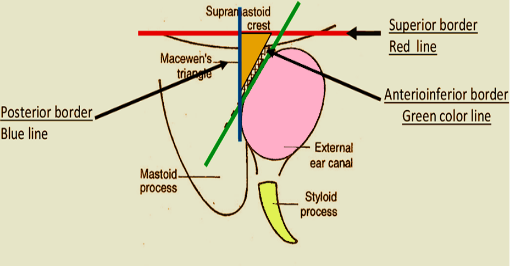

This triangle is the most important surgical landmark for the mastoid antrum or the largest mastoid air cell. In the temporal bone it is situated between the posterior wall of the external acoustic meatus and the posterior root of the zygomatic process. It is also called
It is named after a Scottish surgeon, Sir William MacEwen (1864-1924).
